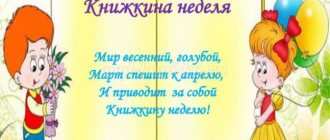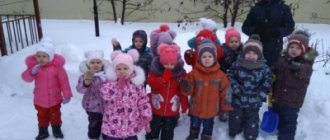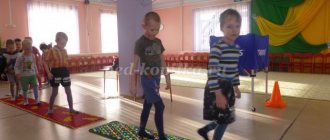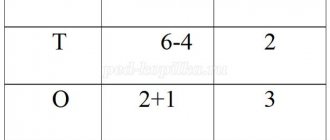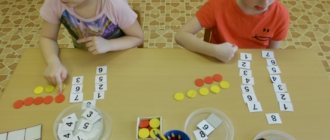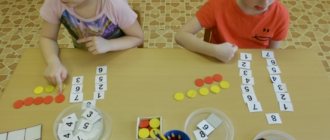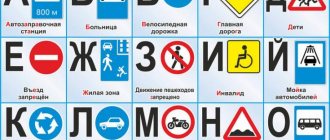Watching sparrows in winter with older children in kindergarten
Observations with older children during walks in winter
Observation of sparrows
Purpose: to consolidate knowledge about urban birds; clarify knowledge about the appearance, habits, and habitat of sparrows. Progress of observation
Sparrows live well, If the house has a warm roof and there is a feeder nearby, Where food is always poured in for them.
-What kind of bird is this? - What color is the plumage? —What do sparrows eat? — How can people help sparrows during the cold season? Proverbs: Where there is millet, there is a sparrow; And a sparrow does not live without people. Signs: If you see sparrows building their nests, the weather will probably be good; If a sparrow flies low above the ground and shouts something in its bird's ear, it means rain. P/i “Sparrows and a cat” Purpose: to teach children to “fly” only at a signal, to move within the area, to jump on two legs.
Observing weather changes Purpose: to learn to name seasonal changes in nature in winter. Progress of observation
You, frost, frost, do not show us your nose.
Go home quickly, take the cold with you. — Is it warm or cold outside? — Why do people dress warmly and walk quickly down the street? Proverbs: The frost is not great, but it does not tell you to stand; In the cold, a kind owner will not even throw the dog out of the gate; Take care of your nose in the extreme cold. Signs: The stars shine very much - it means frost; Crows croak in a flock - it means frost. P/i “Frost is a red nose” Goal: to clearly pronounce the text in the game; to follow the rules of the game.
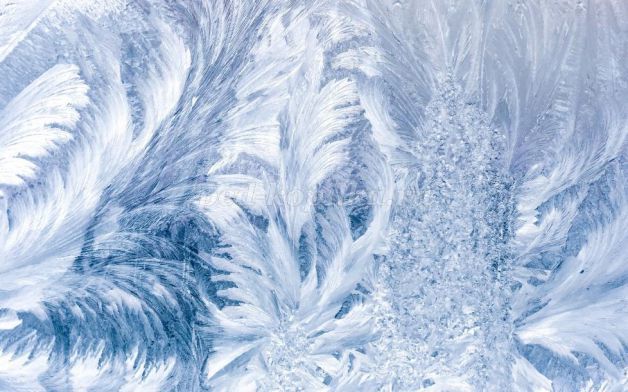
On a birch tree near the house a raven was building a nest.
Guards day and night, The crow wants to become a mother. -What does a crow look like? -What does this bird eat? -Where does the crow live? — Does this bird fly away to warmer climes? Proverbs: A crow can be recognized even in peacock feathers; Without a tail, a crow is not red. Signs: A crow croaks in winter - a blizzard; Crows crow - foretells bad weather. P/i "Crows" Purpose: to teach to run in different directions; act on command.
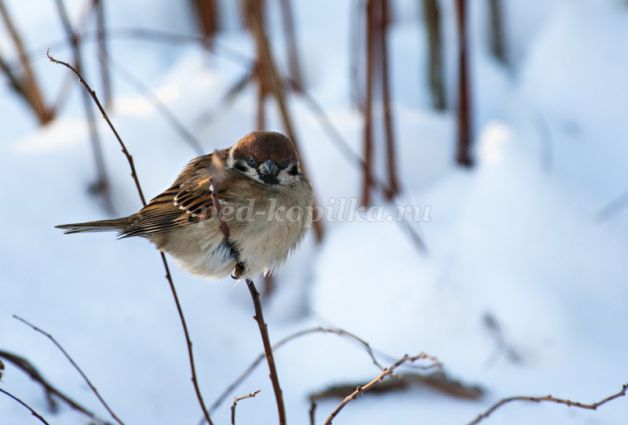
The cloud hides behind the forest, The sun looks from the sky.
And so pure, kind, radiant. -What does the sun look like? -What is the sun like today? Proverbs: The red sun in the white world warms the black earth; Summer is bad when there is no sun. Signs: If in winter the sunset is purple, it means a lot of snow or a blizzard. P/i “Sun” Goal: to encourage children to be physically active; perform movements in accordance with the text.
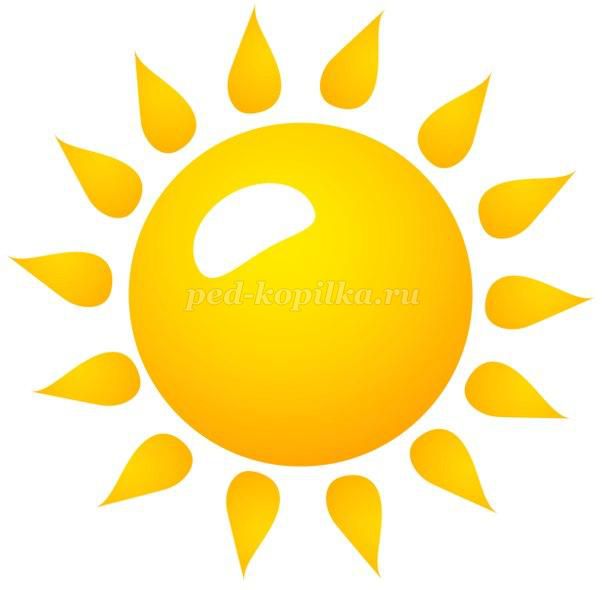
I will draw a quiet, gentle wind, I will draw a thunderous and snowy one, And one that plays with the grass, And one that raises waves.
— Is the wind blowing? — How can you tell if the wind is blowing? — Is it cold or warm? - Which direction does the wind blow? Proverbs: You can’t keep up with the wind in the field; The wind flies without wings. Signs: If there is wind for three days in a row, then the whole month will be windy. The clouds go against the wind - towards the snow. P/i “Wind, breeze” Goal: development of agility; ability to run fast.
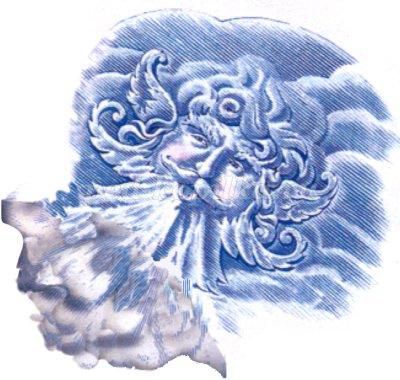
Magpies on the fence are chattering patter.
They tell the news - they collected so much in a day! -What does a magpie look like? -What does this bird eat? — How does a magpie take care of its chicks? Proverbs: The magpie brought it on its tail; The magpie knows where to spend the winter. Signs: A magpie climbs under the eaves - towards the blizzard. P/i “Birds in the Nest” Purpose: actions on a signal; create positive emotions in children.
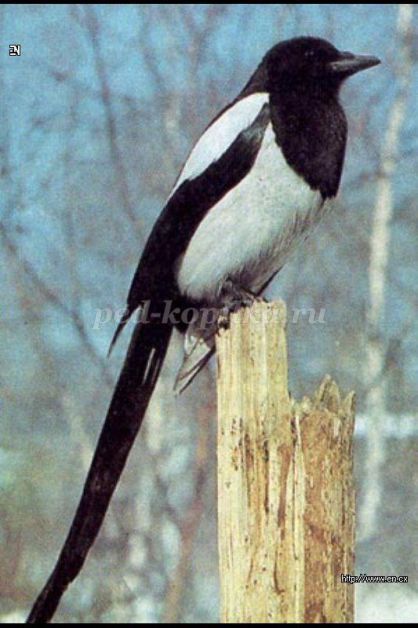
White birch tree Under my window Covered with snow, Like silver.
- What trees do you know? — What is the difference between coniferous and deciduous trees? — How do trees feel in winter? — Why do trees need snow? Proverbs: As are the birches, so are the shoots; Over the sea - up to fir cones. Signs: The earrings of a birch tree burst - it’s time to sow bread. P/i “Make a wish on a tree” Purpose: to consolidate the names of trees; develop attention and dexterity.
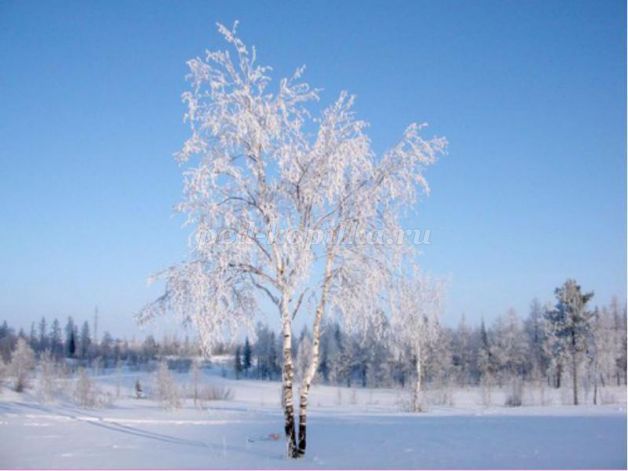
Who was walking in the snow?
Guess the trail! Every snow bird's trail hides a secret. —Have you noticed that there are a lot of bird tracks in the snow? - Who do you think left small footprints in the snow? - Who owns the big footprints? Proverbs: The bird is not great, but its claw is sharp; Every bird praises its nest. Signs: A titmouse knocks on the window - there will be news; A stork makes a nest on the chimney of a house - happiness awaits the owner. P/i "Crow - Tit" Purpose: perform actions on command; cultivate friendly relationships.
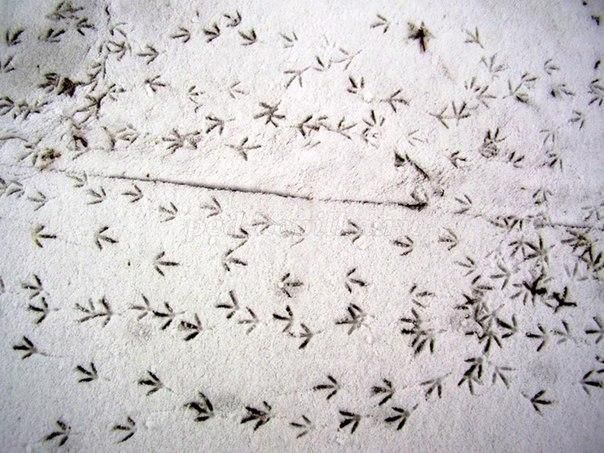
Winter snows in from morning until dark.
Snowflakes curl and swirl around our window. — What color is the snow? - Why does snow melt on your palm? — What does snow feel like? Proverbs: Snow is cold, but it protects you from the cold; The snow is deep - the bread is good. Signs: Large frost, mounds of snow, deeply frozen ground - for the harvest; If in January there are frequent snowfalls and blizzards, then in July there is frequent rain. P/i “The snow is spinning” Purpose: to learn to correlate one’s own actions with the actions of other participants; develop motor activity.
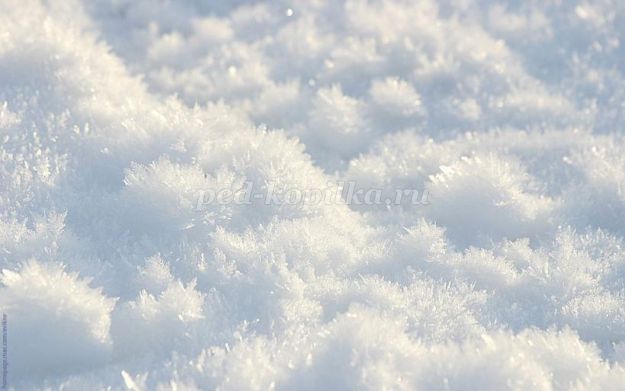
Downy snowflakes, cheerful and alive!
You spin and flicker in the silence of the forest And you cover the earth with shining silver. — What color are the snowflakes? — How many rays does a snowflake have? Proverbs: In a warm winter coat, even frost is a joke; Blizzards and blizzards arrived by February. Signs: If the snow falls on the damp ground and does not melt, then in the spring snowdrops will bloom early and amicably; Frost falls at night, but there will be no snow during the day. P/i “Snowflakes and the Wind” Goal: improving the ability to act on a signal.
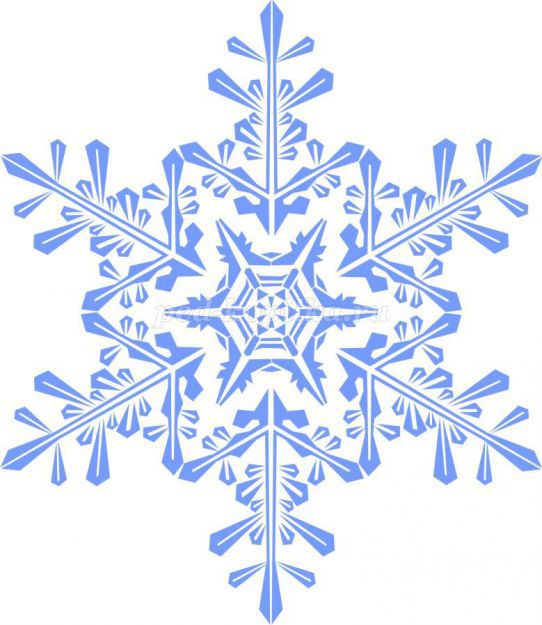
A flock of red-breasted birds sits in the snow, shining.
Let's throw the crumbs as soon as possible for the handsome bullfinches. - What does a bullfinch look like? — What do bullfinches eat? Proverbs: The bullfinch will fly in and visit you about winter. Signs: A bullfinch chirps under the window - a thaw; The bullfinch whistles - winter is coming. P/i “Bullfinches on rowan branches” Goal: development of motor activity; ability to run at a signal.
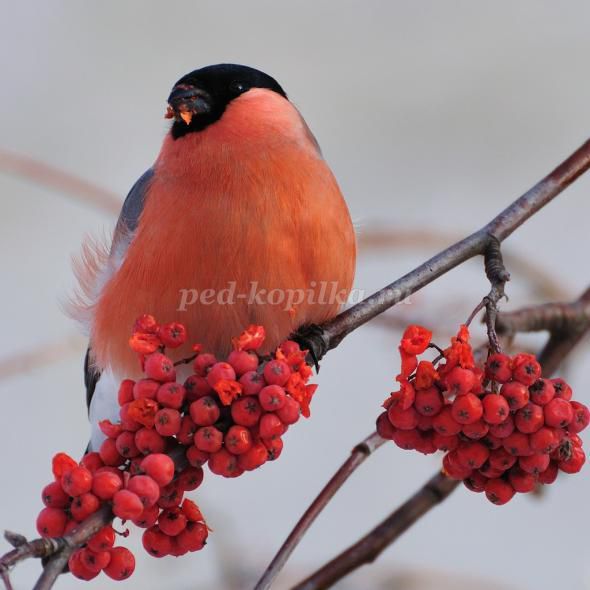
The cheerful titmouse is not afraid of Morozov, even at minus twenty-five. He loves to sing songs!
-What does a titmouse look like? -What does she eat? —Where does he spend the winter? Proverbs: A titmouse is not big, but it is also a bird; A bird in the hands is better than a nightingale in the forest. Signs: A titmouse sits on your hand - your cherished wish will come true. P/i “Nimble Titmouse” Purpose: to perform actions on a signal.
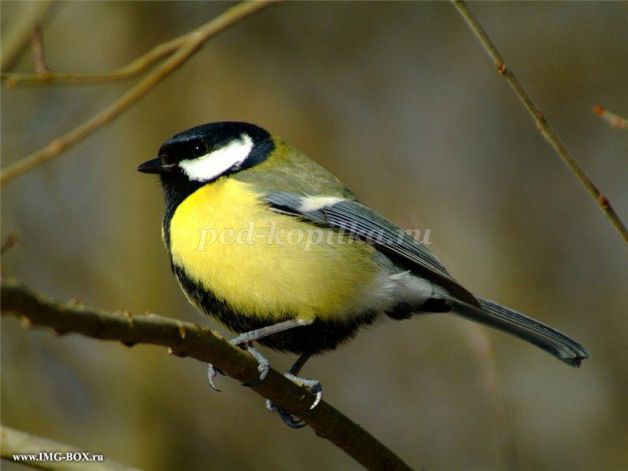
They hang in clusters, Their outfit is beautiful.
Gather a string of berries for your soul, Beads made from rowan are very good! — What kind of shrubs do you know? — What birds eat rowan berries? Proverbs: Let's go out into the valley, sit under the mountain ash - it blooms well. Signs: There are a lot of berries on the rowan tree - it means frost. Late flowering of rowan - for a long autumn. P/i “Birds on the Rowan Tree” Goal: to develop reaction speed. Observing the sky Goal: to continue to form an understanding of the sky. Progress of observation: The sad sky in the morning frowns like a black cloud, But the children are not afraid, They run into the street again. —Are clouds always the same? -What color is the sky? — Determine where the clouds are floating? Proverbs: Everything is possible, you can’t just climb into the sky; No matter how hard you walk, you won’t be able to get into heaven. Signs: Blue evening clouds - a change in weather; The sky is blue - for warmth, light - for frost, dark - for a snowstorm. P/i “Cloud” Purpose: to teach how to run in a limited area.
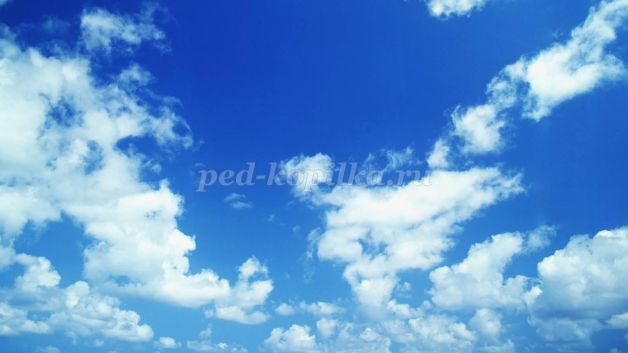
We recommend watching:
Summary of a winter walk - observation in kindergarten A winter walk with children A winter walk in a preparatory group for children with hearing impairment “Zimushki” dance of girls in the senior group of preschool age
Similar articles:
Summary of GCD in the second junior group of kindergarten
Summary of an integrated lesson in the senior group of kindergarten on the topic “Winter Riddles”
Summary of a lesson on cognition in the senior group on the topic: Sorceress - winter
Walking in the senior group. Card file with goals for December
Walking in the senior group. Card file with goals for January
Walk 8 Observation of the ravine
Goals:
– consolidate knowledge about the landscape;
– cultivate love and respect for nature.
Progress of observation
The teacher asks the children questions.
● How did the ravine change with the arrival of winter? (It became covered with snow and became not very steep.)
● Where is there more snow - at the top or bottom of the ravine? (You need to measure with a snowmeter.)
● Why is there more snow below? (Gusts of wind blow away the snow, carrying it down into the ravine.)
●Where will the soil be drier in the spring – at the top or at the bottom of the ravine? (More snow means more water; sand at the top allows water to pass through quickly, but at the bottom it doesn’t, because there is clay there.)
● What does snow do for grass? (A blanket that covers you from frost and wind.)
Research activities
Make a cut with a shovel. Why can't we cut the soil? (The soil was frozen from severe frosts.)
Labor activity
Sweeping paths in the junior group area.
Goal: to cultivate a desire to work.
Outdoor games
"Homeless Hare."
Goal: to teach how to act on a signal from the teacher, following the rules of the game.
"Pathfinder".
Goal: to develop attention and observation.
Individual work
Development of movements.
Goal: to consolidate the ability to navigate the kindergarten area and find an object according to its description.
